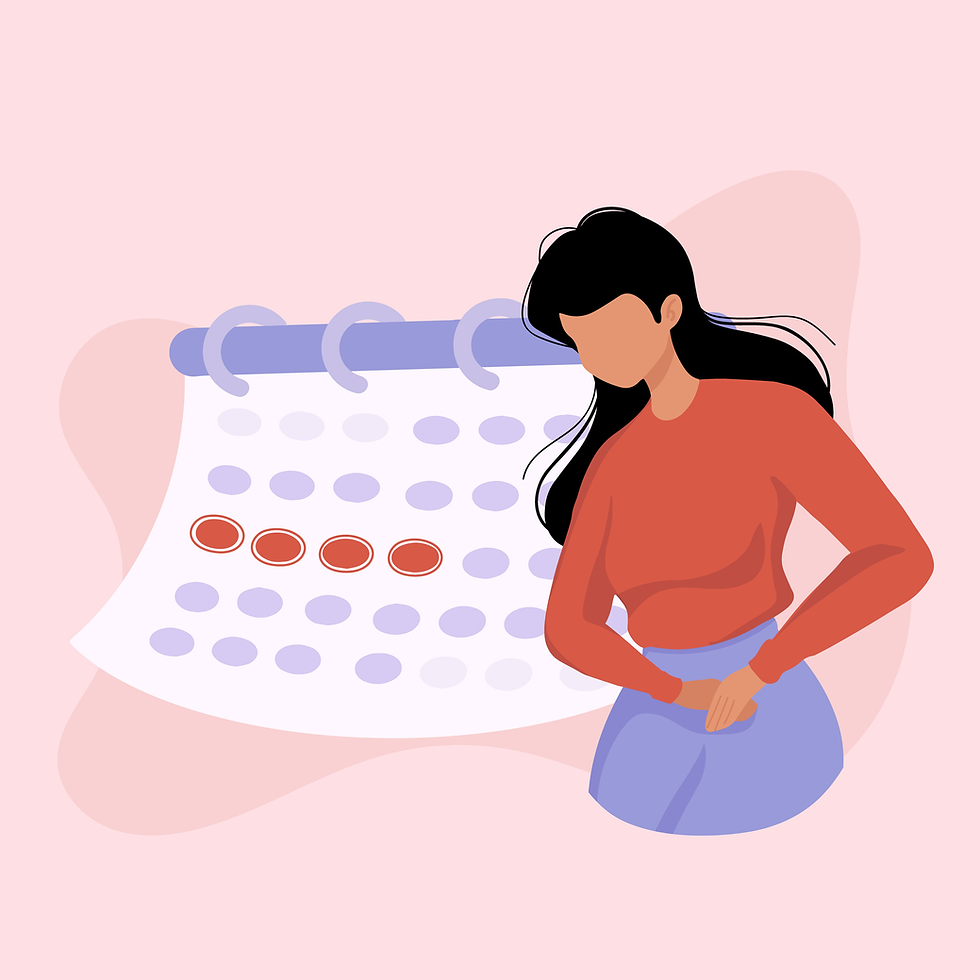Understanding Your Cycle: Part 2, The Follicular Phase
- nw5201
- Mar 19
- 3 min read

Welcome back to our second phase of our menstrual cycle blog saga!
For the vast majority of women, the menstrual cycle is a defining rhythm of life. Understanding its different phases can empower you to work with your body's natural fluctuations, optimize your well-being, and even enhance your athletic performance. The follicular phase, the first half of your cycle, is a dynamic period characterized by significant hormonal shifts with wide-ranging effects.
What is the Follicular Phase?
The follicular phase begins on the first day of your period (day one of your menstrual cycle). It's named after the follicles in your ovaries, which are stimulated to mature an egg for potential ovulation. This phase extends from the start of menstruation until ovulation, which typically occurs around midway through a roughly 28-day cycle (around days 12-14). However, cycle lengths and the duration of the follicular phase can vary between women.
Hormonal Highlights: The Rise of Oestrogen
The key hormonal player in the follicular phase is oestrogen. Starting low during menstruation, oestrogen levels steadily rise throughout this phase, reaching a peak just before ovulation. This increase in oestrogen has numerous effects throughout your body.
What to Expect: Physical and Emotional Shifts
As oestrogen levels climb, many women experience a boost in mood, motivation, and energy levels. Research in active women has shown that motivation to train is often highest around ovulation, when oestrogen peaks. This makes the follicular phase a time when you might feel more inclined to be active and take on challenges. Some even describe feeling more courageous and driven by reward during this period.
Impact on Athletic Performance: Unleashing Your Power
The hormonal environment of the follicular phase can be advantageous for certain types of training.
High-Intensity Training: Research suggests that during the second week of the cycle, when oestrogen is high, more glucose (a carbohydrate) is transported into your muscle fibres to be used as energy. Since high-intensity exercise relies heavily on carbohydrates for quick energy, this phase might be an optimal time for high-intensity interval training (HIIT) and other demanding workouts. Some women find that high-intensity exercise feels particularly good during this time.
Muscle Recovery: The wonders of oestrogen extend to muscle recovery as well. Studies have shown that muscle damage after exercise may be lower when oestrogen levels are highest. This means your muscles might recover better during the follicular phase, potentially allowing for less recovery time between intense training sessions. Tuning into your body's response can help you optimize your training schedule during this phase.
Strength Training: While not definitively a period of enhanced strength, the improved recovery and energy levels can support consistent and effective strength training during the follicular phase. Some coaches even utilize a "follicular finisher" – an extra set of strength training for athletes in this phase who feel capable of more.
A Word of Caution: Joint Laxity and Injury Risk
It's often discussed that high oestrogen levels can lead to increased joint laxity, theoretically making women more prone to injury during times when oestrogen is high, such as just before ovulation. Some research has indeed found greater knee laxity around the time of oestrogen peak.
However, it is crucial to understand that injury risk is complex and multi-faceted, and fluctuating oestrogen levels are just one potential contributing factor. Many physical, psychological, emotional, and social elements can interplay to cause an injury. It's not a guarantee of injury during this phase. Instead of being fearful, tuning into your body's individual experience of the cycle is key. If you notice recurring niggles at a specific point in your cycle, including the high-oestrogen phase, tracking this can provide valuable insights for proactive management, such as more diligent warm-ups or support. The emphasis should always be on building a resilient body through consistent training, proper technique, and adequate recovery to withstand the stresses of activity.
In Conclusion:
The follicular phase is a powerful time in your menstrual cycle, marked by rising oestrogen that often brings increased energy, better mood, and potential advantages for high-intensity training and muscle recovery. While the theoretical link to joint laxity exists, remember that injury is complex, and proactive measures for building a strong and resilient body are the best defense. By understanding and tracking your unique experience during the follicular phase, you can learn to work in harmony with your body, optimizing your fitness journey and overall well-being.


Comments